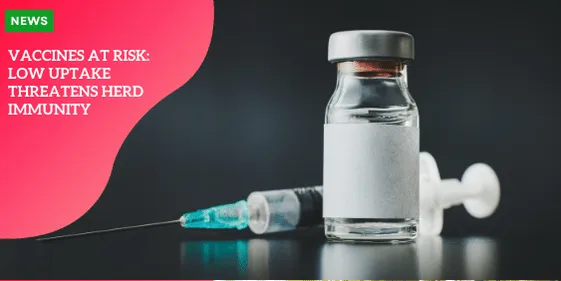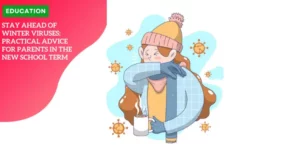Vaccines at Risk: Low Uptake Threatens Herd Immunity

Health officials in the United Kingdom have expressed grave concerns over the country’s declining vaccination rates.
This troubling trend, they warn, places the nation at a critical “tipping point” where routine vaccinations’ low uptake significantly endangers children’s health by increasing their susceptibility to severe diseases.
According to experts, stalling vaccination rates against illnesses such as whooping cough and measles indicate that population immunity has fallen below the threshold necessary to prevent outbreaks effectively.
Alarming Trends in Vaccination Rates
Recent data released by the UK Health Security Agency (UKHSA) for the period from January to March reveals only a slight increase in some vaccinations.
Notably, there was a modest 0.3% rise in pre-school booster jabs administered to children under five.
Despite this small uptick, vaccination targets are still far from being met.
The World Health Organization (WHO) has set a target for 95% of under-fives to be vaccinated to maintain herd immunity.
Unfortunately, the UK continues to fall short of this benchmark.
Disparities in Regional Vaccination Coverage
A closer examination of the six-in-one jab, which protects against whooping cough, polio, and tetanus, alongside the measles, mumps, and rubella (MMR) vaccine, shows a mixed picture across the UK.
In Scotland and Wales, vaccination coverage has met or exceeded the WHO’s 95% target.
However, the UK as a whole presents a less optimistic scenario.
Among children under two, only 91.5% have received the six-in-one jab, and within the entire under-five age group, the proportion drops to a concerning 84.5%.
Furthermore, the coverage for the first dose of the MMR vaccine (MMR1), typically given at the age of one, has decreased by 0.5%, resulting in only 92.5% of children being vaccinated.
Although the second dose of the MMR vaccine (MMR2), administered between ages three and five, has seen a slight increase of 0.2%, it still only reaches 85.2% of the targeted population.
The Growing Threat of Whooping Cough
Professor Sir Andrew Pollard, head of the UK’s vaccine committee and a paediatrician, has voiced significant concerns regarding the rising incidence of whooping cough, also known as pertussis or the “100-day cough.”
This condition is particularly dangerous for infants and young children.
Whooping cough symptoms initially resemble those of a common cold, including a runny nose and sore throat.
However, after approximately a week, the infection can progress to severe coughing fits that can last several minutes and tend to worsen at night.
Infants may also exhibit a distinctive “whoop” sound or experience difficulty breathing following a coughing bout.
The bacteria responsible for whooping cough spread through coughs and sneezes, prompting experts to advise that family members of infected individuals remain at home until three weeks after symptoms begin or 48 hours after starting antibiotics.
Measles: A Persistent Concern
Measles remains another significant concern for health officials.
Earlier this year, the NHS initiated a campaign urging parents to vaccinate their children against this highly contagious disease.
Since late last year, there has been a noticeable rise in measles cases, with clusters appearing in several regions, including London, which has the lowest child vaccine uptake rate in England.
Measles is recognized as one of the most infectious diseases known to humans.
When vaccination rates decline, the virus can spread rapidly, posing severe health risks.
Although measles typically resolves within 10 days, it can lead to severe complications such as blindness, seizures, and meningitis.
The Urgent Need for Action
The current state of vaccination in the UK highlights a pressing need for increased public awareness and proactive measures to boost vaccination rates.
Health officials emphasize the critical role vaccinations play in safeguarding public health by preventing the spread of infectious diseases.
They urge parents to ensure their children receive all recommended vaccinations on time.
Moreover, targeted efforts are necessary to address the regional disparities in vaccination coverage.
By focusing on areas with lower uptake rates, such as London, and implementing localized campaigns, it is hoped that more children can be protected against preventable diseases.
Conclusion
The UK stands at a pivotal moment in its public health journey.
With vaccination rates falling short of WHO targets, the risk of outbreaks of diseases like whooping cough and measles has increased significantly.
Health officials are calling for immediate action to reverse this trend and protect the nation’s children.
Through concerted efforts, increased public awareness, and targeted vaccination campaigns, it is possible to improve vaccination coverage and ensure that all children are shielded from these preventable diseases.
We face a significant challenge, and immediate action is necessary.





